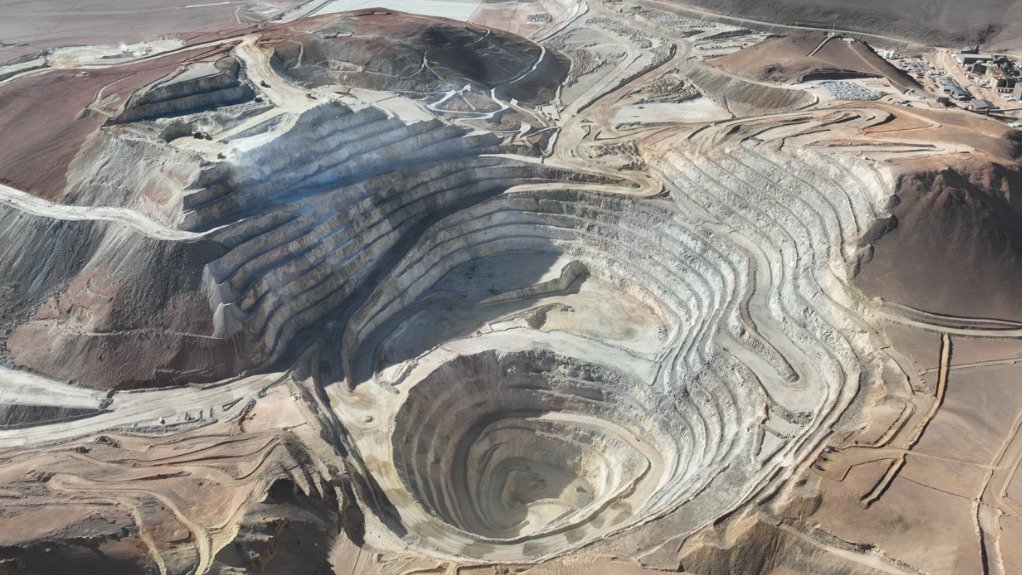With a well-built portfolio of assets in several countries, gold major Gold Fields is in a strong position to deliver attractive near-term growth underpinned by a steady baseload of production with visibility, while improving the company’s financial stability and operational sustainability.
The company forecasts gold-equivalent production (excluding its Ghana-based Asanko joint venture mine) to range between 2.2- million ounces and 2.3-million ounces in 2024, increasing to about 2.6-million ounces in 2025 and to about 2.5-million ounces by 2026.
The company’s production base is underpinned by four key areas, which combined, provide a baseload production of 2.2- million ounces to 2.4-million ounces until 2030, says Gold Fields corporate affairs VP Sven Lunsche.
This includes about one-million ounces of production from Gold Fields’ Australian mines until 2030, about 480 000 oz/y production from the Ghana-based Tarkwa mine, steady-state production of about 387 000 oz/y from 2027 at Gold Fields’ South Africa-based South Deep mine, and average yearly output of 485 000 oz at the Chile-based Salares Norte mine from 2025 to 2029.
In assessing the outlook of the Damang and Cerro Corona mines, in Ghana and Peru respectively, Lunsche notes that Gold Fields is approaching decisions in terms of the mines’ respective roles in its portfolio.
“We are managing their future in a way that will deliver value for Gold Fields while being responsible towards the various stakeholders. We are considering alternatives to best achieve this and will continue to keep the market appraised in this regard,” he asserts.
In noting the strength of the gold price over the past two years, the company has exploited the tailwinds to improve its financial performance, consequently enabling it to report strong normalised earnings, generate significant free cash flows, strengthen its balance sheet and pay a strong dividend to shareholders.
However, Lunsche says Gold Fields is mindful that the favourable gold price and exchange rate support will not persist forever.
“We remain committed to continue building a resilient business that delivers sustainable value for stakeholders, including competitive returns to shareholders, through the price cycles. Key to this is running the group and our mines more efficiently, as high inflation in the industry in recent years has started to erode margins and asset valuations,” he explains.
Salares Norte Developments
Recently, the Salares Norte project suffered setbacks, owing to the early onset of winter in the southern hemisphere, resulting in the freezing of material in the piping of the process plant, thereby requiring the temporary shutdown of the plant.
However, Gold Fields elected to restart this plant despite the uncertainty on production levels during the winter months.
As such, Lunsche says, full-year guidance for 2024 for Salares Norte has been revised down, from the previously indicated gold-equivalent ounces range of between 220 000 oz and 240 000 oz, to between 90 000 oz and 180 000 oz.
Owing to the revision, Gold Fields’ group production profile will be affected, with its 2024 production estimates having been revised down from between 2.33-million ounces and 2.43-million ounces, to now reflect between 2.2-million ounces and 2.3-million ounces. All-inclusive costs for the group in 2024 are revised up, from a previously guided $1 600/oz to $1 650/oz range, to a range of between $1 675/oz and $1 740/oz.
Meanwhile, some operations at Salares Norte were affected by a notice from Chile’s Superintendence of Environment to temporarily suspend the dismantling of Rocky Area No 3 on May 17 as part of Gold Fields’ approved Chinchilla rescue and relocation plan.
“Mining operations and project activities are continuing, and the focus remains on the ramp-up of the project, respecting the buffer zones established to avoid any potential disturbance to this [Chinchilla] species, and complying with all other regulatory requirements established by the authority.
“In accordance with the approved capture and rescue plan, Gold Fields is not planning to undertake any capture or relocation activities during the winter months at Salares Norte, which is from May to August.”
Lunsche adds that the project remains a high-quality asset that will contribute materially to Gold Fields’ cashflows in future.
Reflecting on the sizable economic impact of Salares Norte, he indicates that this project will increase Chile’s gold production by 40%, and position it as one of the main gold-producing regions in South America.
Meanwhile, in South Africa, the company notes that, after four years of progressive production and financial improvement at the South Deep mine, production remained stable in 2023 at about 352 000 oz.
Since the beginning of last year, production growth has slowed owing to unfavourable ground conditions and skills shortages in key categories, such as artisans and longhole rig operators, which impacted fleet availability and use during 2023, but these challenges have largely been addressed.
“Encouragingly, South Deep still generated adjusted free cash flow of R3.8-billion [$204-million] in 2023 – a 78% increase from the R2.1-billion [$129-million] recorded in 2022. This is the fifth consecutive year of positive cash flow,” states Lunsche.
The current focus for South Deep is to continue the upward production trend by setting the mine up for improved longevity, quality ounce production and sustainable production increases, he concludes.
Edited by: Donna Slater
Features Deputy Editor and Chief Photographer
EMAIL THIS ARTICLE SAVE THIS ARTICLE
ARTICLE ENQUIRY
To subscribe email subscriptions@creamermedia.co.za or click here
To advertise email advertising@creamermedia.co.za or click here













